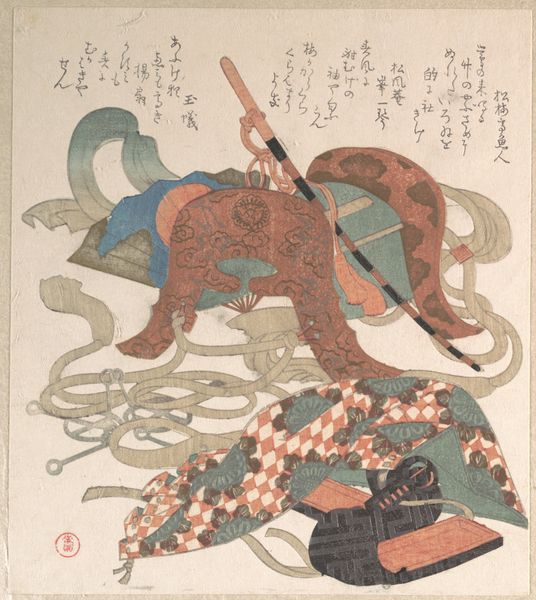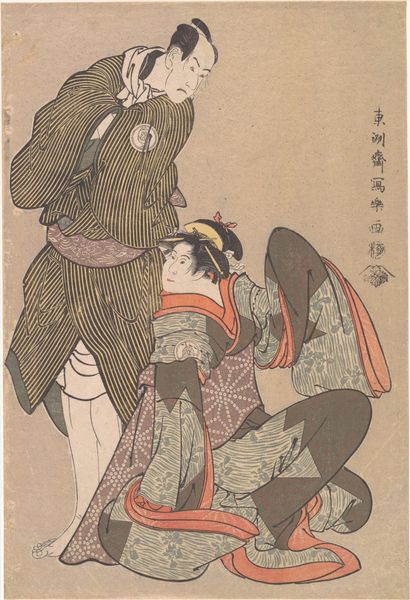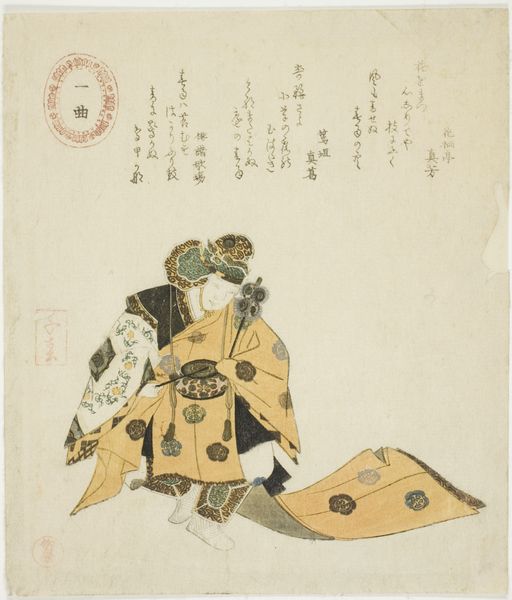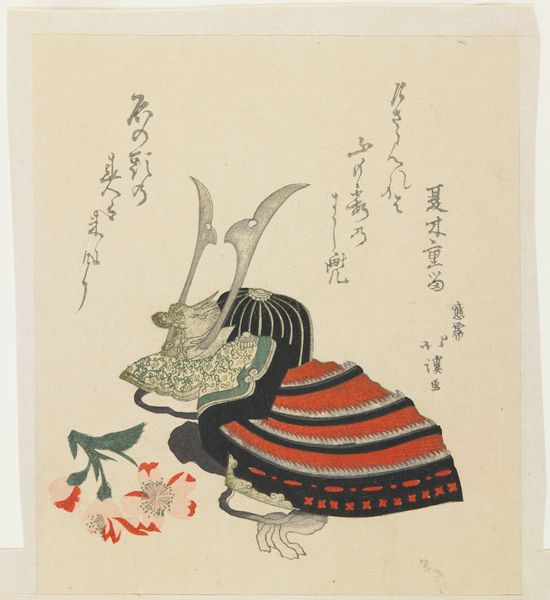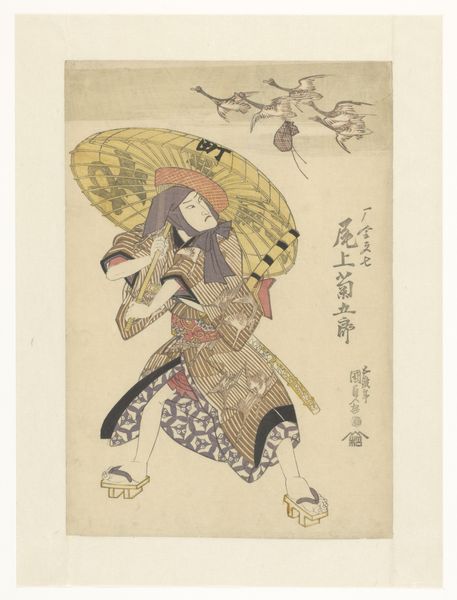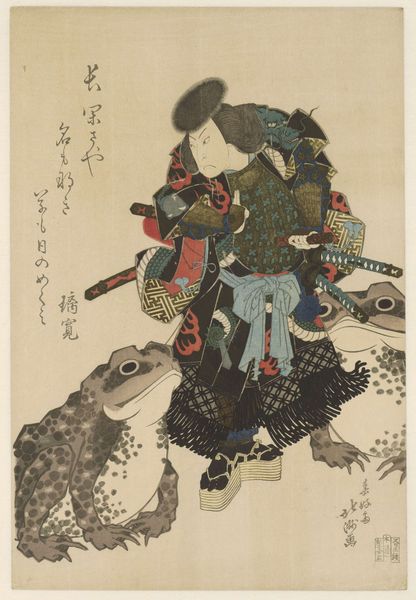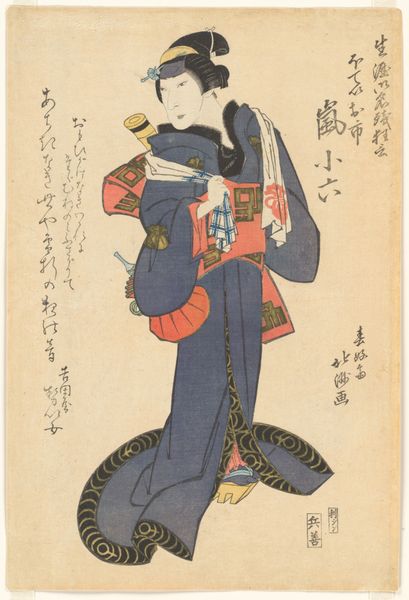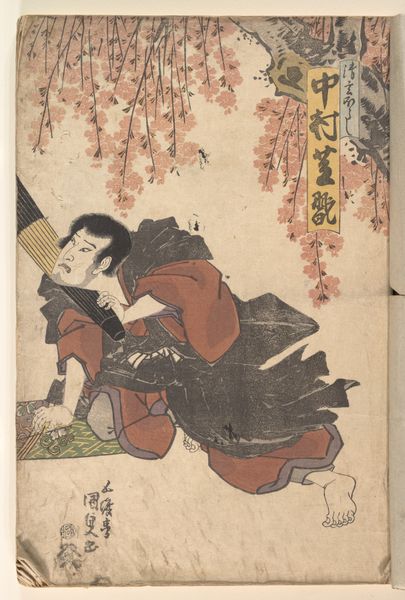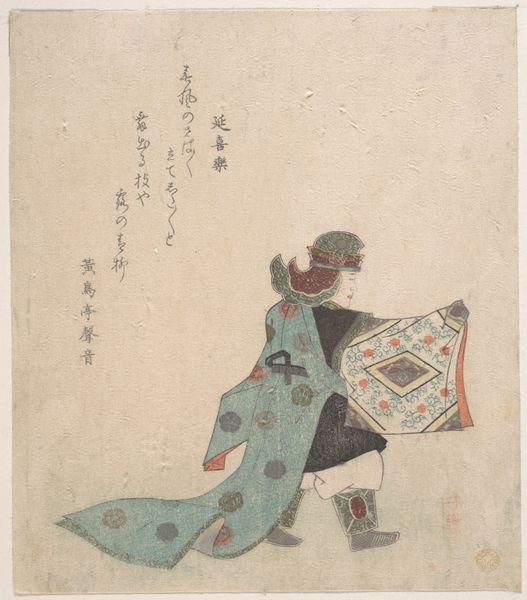
Dimensions: 8 1/8 x 6 5/8 in. (20.7 x 16.9 cm) (image, sheet)
Copyright: Public Domain
Curator: Here we have a fascinating turn-of-the-century woodblock print titled "(Monkey Costumed for a New Year's Dance)." Editor: My first impression is its strange blend of the playful and the grotesque; the sharp angularity of the monkey's pose contrasts wildly with the flowing text, while the flatness almost exaggerates the fur. Curator: The print offers insight into the complex relationship between humans and animals in Japanese society at the time. In Japanese culture, monkeys were viewed through the lens of folklore, sometimes seen as divine messengers and sometimes as comedic figures. Here, dressed in what seems to be theatrical garb, the monkey takes on a human persona. Editor: From a purely visual perspective, the layering of textures—the monkey's fur against the plaid pattern of the kimono—adds to its striking character, while that single red detail at the upper right gives it balance. Can you read any of the characters for us? Curator: This caricature probably reflects societal anxieties and maybe even subtle commentary about social hierarchies. Note the rigid black hat worn above the red cap—a potential symbol for restrictive customs as Japan continued its rapid modernization and navigated its role among colonial powers at that time. This is quite fascinating. Editor: I notice the deliberate economy of line. How the artist captures so much detail, movement, and perhaps subversion with just ink, color and paper. Look, too, at the tension between line and color. There's no color within those inscribed lines, just around them. Curator: Precisely. Also note how Japanese New Year's festivals often featured performances where animals or people in animal costumes challenged the traditional expectations surrounding these celebrations. We could argue that through this caricature, traditional norms were being subverted and negotiated. Editor: Thinking about the use of woodblock print—how the act of carving and printing creates this distancing effect, and perhaps enables even sharper cultural observations than, say, paint. The physical constraints are themselves revealing. Curator: Absolutely. It encourages reflection about who defines "normal" and how culture adapts and shifts its perception. I see now that these images play vital roles in exploring the dynamics of human behavior through costumed, animal characters. Editor: This has led me to view its textures as metaphors for cultural forces; those carved, deliberate shapes speak to that critical push and pull in Japanese identity at the time. Thank you!


